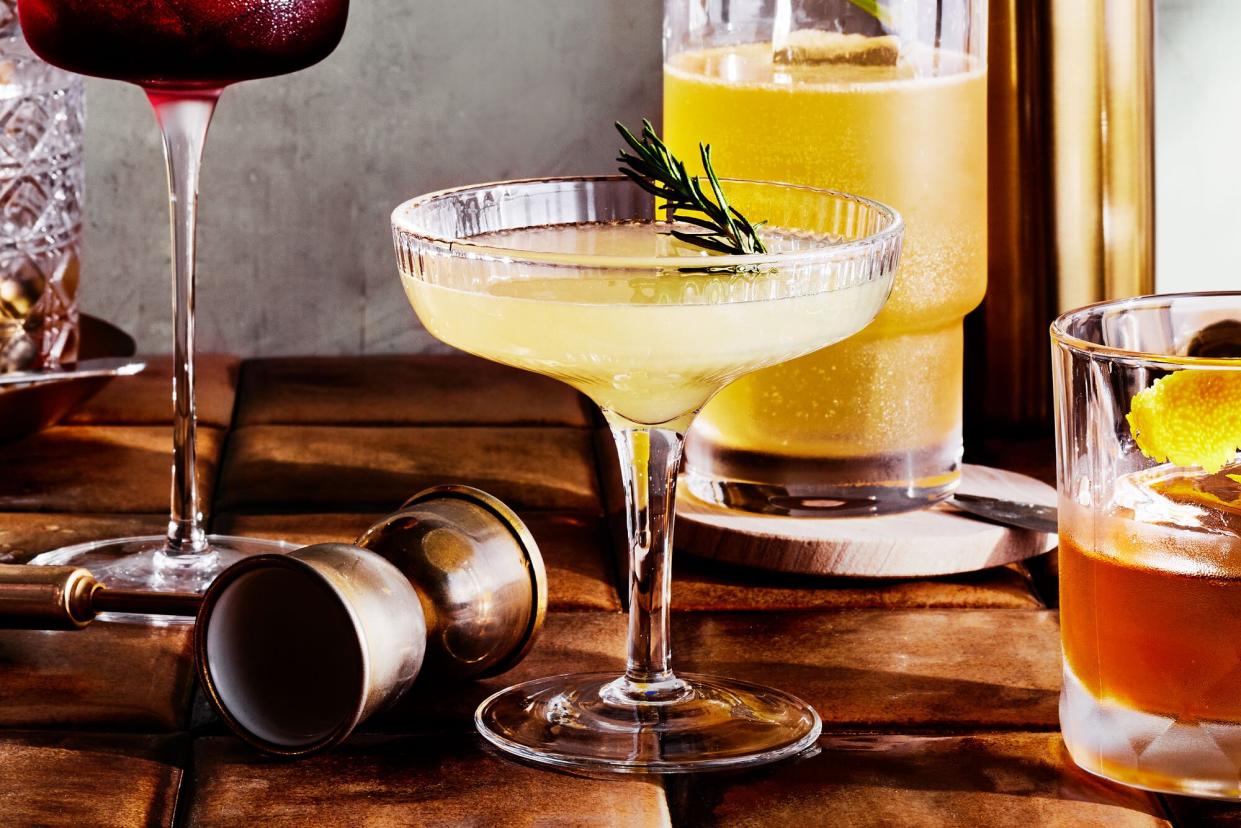What Is the Bartender's Golden Ratio?

Eva Kolenko
Any drinks obsessive can get excited about an ornate cocktail made with expertly mixed, esoteric ingredients served up in a glass whose name they've never heard of before –– but sometimes it's great to lean on the basics. Almost all the classic drinks you know and love, from the Daiquiri to the Gimlet or the Margarita come down to the same basic ratio: 2:1:1. That's two parts spirit, one part sweet, and one part sour, commonly known as the Golden Ratio. Following this ratio will open up a world of cocktail possibilities, and is a truly fool-proof route to an excellent drink.
Though mastering this fundamental ratio will help make you a more confident and skilled bartender at home, professionals rely on it as well. "The cocktail ratio is all about achieving balance," explains Harrison Snow, co-owner and beverage director of Lullaby, a cocktail bar in New York's Lower East Side. "People think bartenders have this encyclopedic knowledge of cocktail recipes, but we are really leaning on these fundamental proportions and simply varying the ratio and ingredients to come up with new cocktails."
The bar team at Lullaby is composed of industry veterans with serious cocktail experience, as well as team members newer to bartending who are being trained on the job. Snow and his team are working to build their training program, and learning the Golden Ratio is one of the first, and arguably most important, lessons. "You can look up any cocktail recipe," says Snow. "And of course we have our signature cocktail recipes in-house, but as long as all our staff knows the ratios to make a balanced cocktail, we can really put our individual spin on things."
The Daiquiri, for which the most basic recipe calls for two parts rum, one part lime juice, and one part sugar syrup, is a great example of the Golden Ratio. Swap out rum for gin and you have a Gimlet; trade gin for tequila to make a Tommy's Margarita. While the Golden Ratio is key for achieving balance in the composition of these classic cocktails, you can use the ratio as a starting point to create variations on the cocktails. Decreasing the amount of sugar can give you a fresher, punchier drink, and mixing spirits can create complexity.
When developing recipes for cocktails, Snow starts by playing around with acids and sweeteners. He suggests swapping simple sugar for a more complex syrup by using demerara or turbinado sugar, which impart a rich, caramelized flavor, or trying coconut sugar.Use pantry staples like agave, maple syrup, or honey thinned out with a bit of warm water for a cocktail sweetener on the fly. Though they add a bit more booze, liqueurs or amari make for great sweeteners, too.
As for acidity, the options can feel nearly endless. Lemons and limes are key to so many foundational cocktails, but other citrus like grapefruit, orange, or yuzu can bring floral sweetness. "You can always spike another fruit juice with some lemon or lime to bring down the pH of the juice, making it more acidic to create that balance," says Snow. If you're feeling adventurous, try a solution of different powdered acids like citric acid or malic acid (which mimics the acidic flavor of green apple) to keep the clarity of a cocktail.

